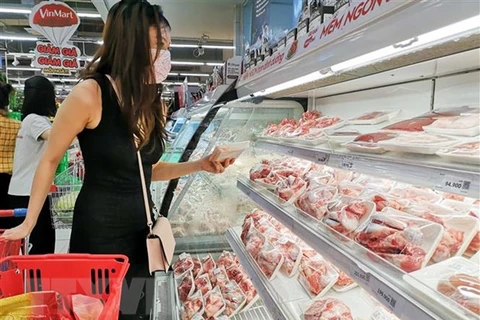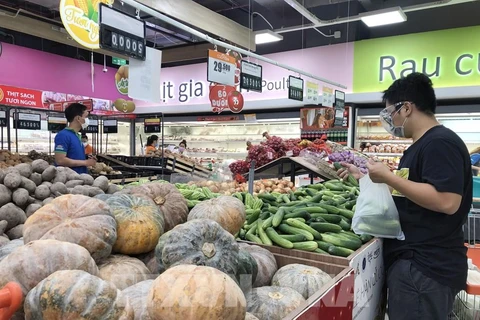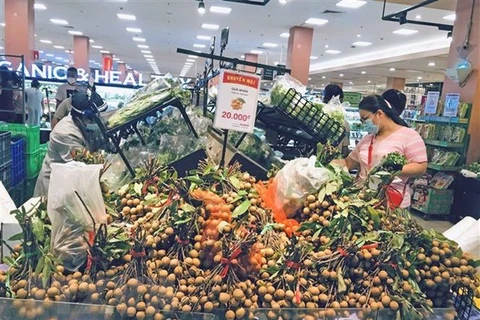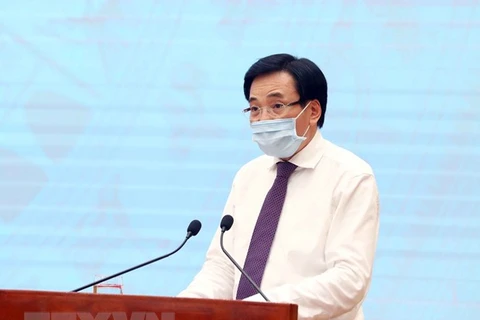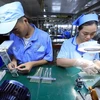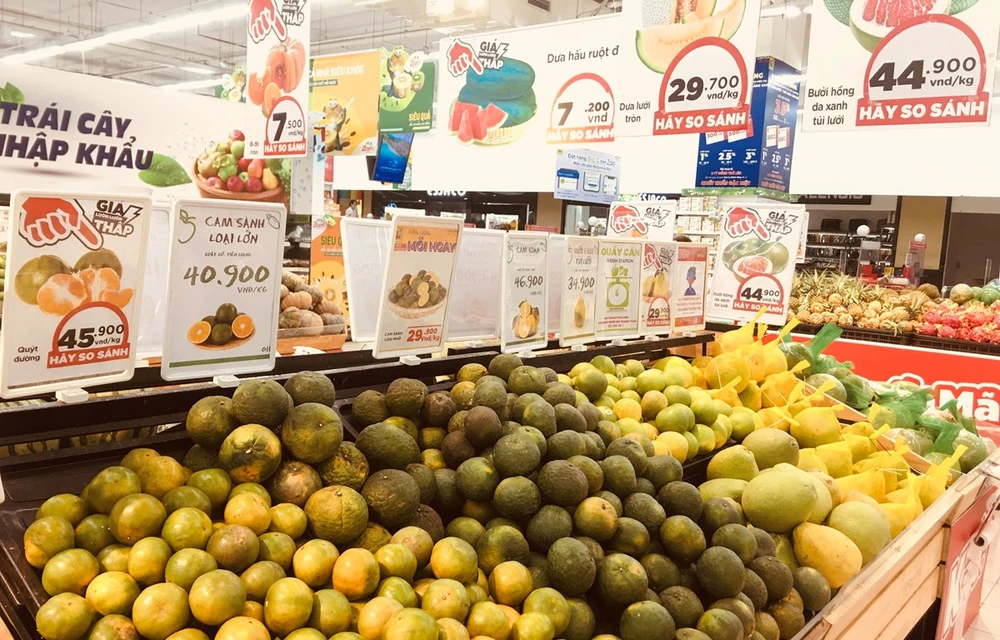
Hanoi (VNA) – The Consumer Price Index (CPI) in September edged down by 0.62 percent compared to August but was up by 2.06 percent compared to the same period last year, according to the General Statistics Office (GSO).
Housing and construction was among five groups of commodities and services experiencing declining prices last month, said Nguyen Thu Oanh, Director of the GSO’s Price Statistics Department. The commodity group saw prices dip 1.99 percent, contributing 0.37 percentage point to the decrease of the monthly CPI, due to a cut in housing rental rates to support people at the time when social distancing order remained in place to stamp out the spread of COVID-19.
Electricity prices were also reduced for households and businesses in cities and provinces that were undertaking social distancing measures under the Prime Minister’s Directive 16 while the arrival of autumn affected demand for power and water compared to the previous month.
Education slid 2.89 percent month-on-month, contributing 0.18 percentage point to the CPI reduction as a result of the exemption and reduction in tuition fees for the academic year 2021-2022 in some localities.
Food and catering services decreased 0.16 percent largely owing to drops of 0.17 percent and 2.52 percent in the prices of rice and pork, respectively, thanks to the abundant supply.
Rice prices were down month-on-month as the harvest of Summer-Autumn crops peaked across the country. Locally, the prices of ordinary rice ranged between 11,500 – 12,000 VND (0.51 – 0.53 USD) per kg and sticky rice between 24,700 – 34,500 VND per kg. Export prices were also declining, Oanh said, because of weakening demand from overseas buyers, high transport costs and the resurgence of COVID-19 restricting the deliveries.
Post and telecommunications inched down 0.06 percent, mostly because of the fall in prices of mobile phones and tablets.
By contrary, growth was seen in prices of the remaining six groups, of which beverage and tobacco rose 0.17 percent; household appliance gained 0.09 percent; garments, hats and footwear climbed 0.02 percent; culture, entertainment and tourism rose 0.01 percent; medicine and medical service increased 0.03 percent; and other commodities and services were up 0.02 percent.
The average CPI for the nine month period increased by 1.82 percent compared to the same period last year, the lowest nine-month CPI growth recorded since 2016.
The rise was attributed to the fuel price and tuition fee hikes from January-September, according to the GSO. The average petrol price surged 24.8 percent after 16 revisions since the beginning of this year, contributing 0.89 percentage point to the nine-month CPI growth. The gas price also rose 21.7 percent, contributing 0.32 percentage point of the rise in overall CPI. Education services picked up 3.76 percent, contributing 0.2 percentage point.
Groups of commodity seeing price decreases included food (0.29 percent); and electricity (0.99 percent) thanks to the Government’s scheme to reduce power bills for pandemic-hit households and businesses in the second and fourth quarters of 2021.
Core inflation in September tumbled down 0.26 percent month-on-month but went up 0.74 percent year-on-year. In the nine-month period, the average core inflation rose by 0.88 percent compared to a year earlier, the lowest since 2011.
Also according to the GSO, Vietnam witnessed a steep decline in gross domestic product (GDP) of 6.17 percent in the third quarter of this year, the largest quarterly decline recorded since 2000, as a result of the deeply-felt impacts of the fourth wave of the COVID-19 pandemic.
“The negative GDP growth in the third quarter is predictable as in the past three months, many localities across the country had to follow strict social distancing measures, thus halting production,” GSO General Director Nguyen Thi Huong said.
In the first nine months of the year, the country’s GDP still expanded 1.42 percent compared to the same period last year./.
